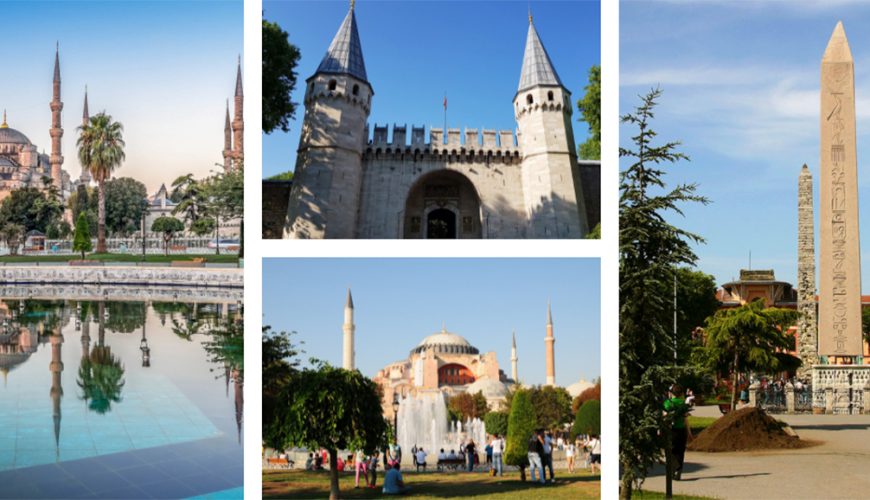Category: Questions about Istanbul
- Home
- Category: Questions about Istanbul
The Bosphorus, also known as the Istanbul Strait, is a strait that separates Turkey’s European and Asian sides. It was named after a Greek myth about an affair between Zeus and a lovely lady named Io. Hera created the horsefly to sting her on the rump and cover up her infidelity after she discovered herself […]
Read More
The Bosphorus, also known as the Istanbul Strait, is a strait that separates Turkey’s European and Asian sides. It was named after a Greek myth about an affair between Zeus and a lovely lady named Io. Hera created the horsefly to sting her on the rump and cover up her infidelity after she discovered herself […]
Read More
The Bosphorus, also known as the Istanbul Strait, is a strait that separates Turkey’s European and Asian sides. It was named after a Greek myth about an affair between Zeus and a lovely lady named Io. Hera created the horsefly to sting her on the rump and cover up her infidelity after she discovered herself […]
Read More
The Bosphorus, also known as the Istanbul Strait, is a strait that separates Turkey’s European and Asian sides. It was named after a Greek myth about an affair between Zeus and a lovely lady named Io. Hera created the horsefly to sting her on the rump and cover up her infidelity after she discovered herself […]
Read More
The Bosphorus, also known as the Istanbul Strait, is a strait that separates Turkey’s European and Asian sides. It was named after a Greek myth about an affair between Zeus and a lovely lady named Io. Hera created the horsefly to sting her on the rump and cover up her infidelity after she discovered herself […]
Read More
The Hippodrome is much more ancient than the city of Constantinople, which people often consider as its birthplace. The first Hippodrome was erected when Byzantium was a minor provincial town. Emperor Septimius Severus rebuilt and extended the city’s walls in AD 203, building a hippodrome for chariot races and other amusements. The Emperor Constantine the […]
Read More
The Hippodrome is much more ancient than the city of Constantinople, which people often consider as its birthplace. The first Hippodrome was erected when Byzantium was a minor provincial town. Emperor Septimius Severus rebuilt and extended the city’s walls in AD 203, building a hippodrome for chariot races and other amusements. The Emperor Constantine the […]
Read More
The Hippodrome is much more ancient than the city of Constantinople, which people often consider as its birthplace. The first Hippodrome was erected when Byzantium was a minor provincial town. Emperor Septimius Severus rebuilt and extended the city’s walls in AD 203, building a hippodrome for chariot races and other amusements. The Emperor Constantine the […]
Read More
The Hippodrome is much more ancient than the city of Constantinople, which people often consider as its birthplace. The first Hippodrome was erected when Byzantium was a minor provincial town. Emperor Septimius Severus rebuilt and extended the city’s walls in AD 203, building a hippodrome for chariot races and other amusements. The Emperor Constantine the […]
Read More
The Hippodrome is much more ancient than the city of Constantinople, which people often consider as its birthplace. The first Hippodrome was erected when Byzantium was a minor provincial town. Emperor Septimius Severus rebuilt and extended the city’s walls in AD 203, building a hippodrome for chariot races and other amusements. The Emperor Constantine the […]
Read More
Karabet Balyan, the court architect of Sultan Abdulmecid, built the Dolmabahce Palace between 1843 and 1856. The palace is an excellent example of Byzantine-Ottoman architecture, blending several Western styles. Topkapi Palace, on the other hand, has long been their most significant residence – until Dolmabahce Palace was built. The Dolmabahce Palace in Istanbul has 285 […]
Read More
Karabet Balyan, the court architect of Sultan Abdulmecid, built the Dolmabahce Palace between 1843 and 1856. The palace is an excellent example of Byzantine-Ottoman architecture, blending several Western styles. Topkapi Palace, on the other hand, has long been their most significant residence – until Dolmabahce Palace was built. The Dolmabahce Palace in Istanbul has 285 […]
Read More
Karabet Balyan, the court architect of Sultan Abdulmecid, built the Dolmabahce Palace between 1843 and 1856. The palace is an excellent example of Byzantine-Ottoman architecture, blending several Western styles. Topkapi Palace, on the other hand, has long been their most significant residence – until Dolmabahce Palace was built. The Dolmabahce Palace in Istanbul has 285 […]
Read More
Karabet Balyan, the court architect of Sultan Abdulmecid, built the Dolmabahce Palace between 1843 and 1856. The palace is an excellent example of Byzantine-Ottoman architecture, blending several Western styles. Topkapi Palace, on the other hand, has long been their most significant residence – until Dolmabahce Palace was built. The Dolmabahce Palace in Istanbul has 285 […]
Read More
Karabet Balyan, the court architect of Sultan Abdulmecid, built the Dolmabahce Palace between 1843 and 1856. The palace is an excellent example of Byzantine-Ottoman architecture, blending several Western styles. Topkapi Palace, on the other hand, has long been their most significant residence – until Dolmabahce Palace was built. The Dolmabahce Palace in Istanbul has 285 […]
Read More
Karabet Balyan, the court architect of Sultan Abdulmecid, built the Dolmabahce Palace between 1843 and 1856. The palace is an excellent example of Byzantine-Ottoman architecture, blending several Western styles. Topkapi Palace, on the other hand, has long been their most significant residence – until Dolmabahce Palace was built. The Dolmabahce Palace in Istanbul has 285 […]
Read More


